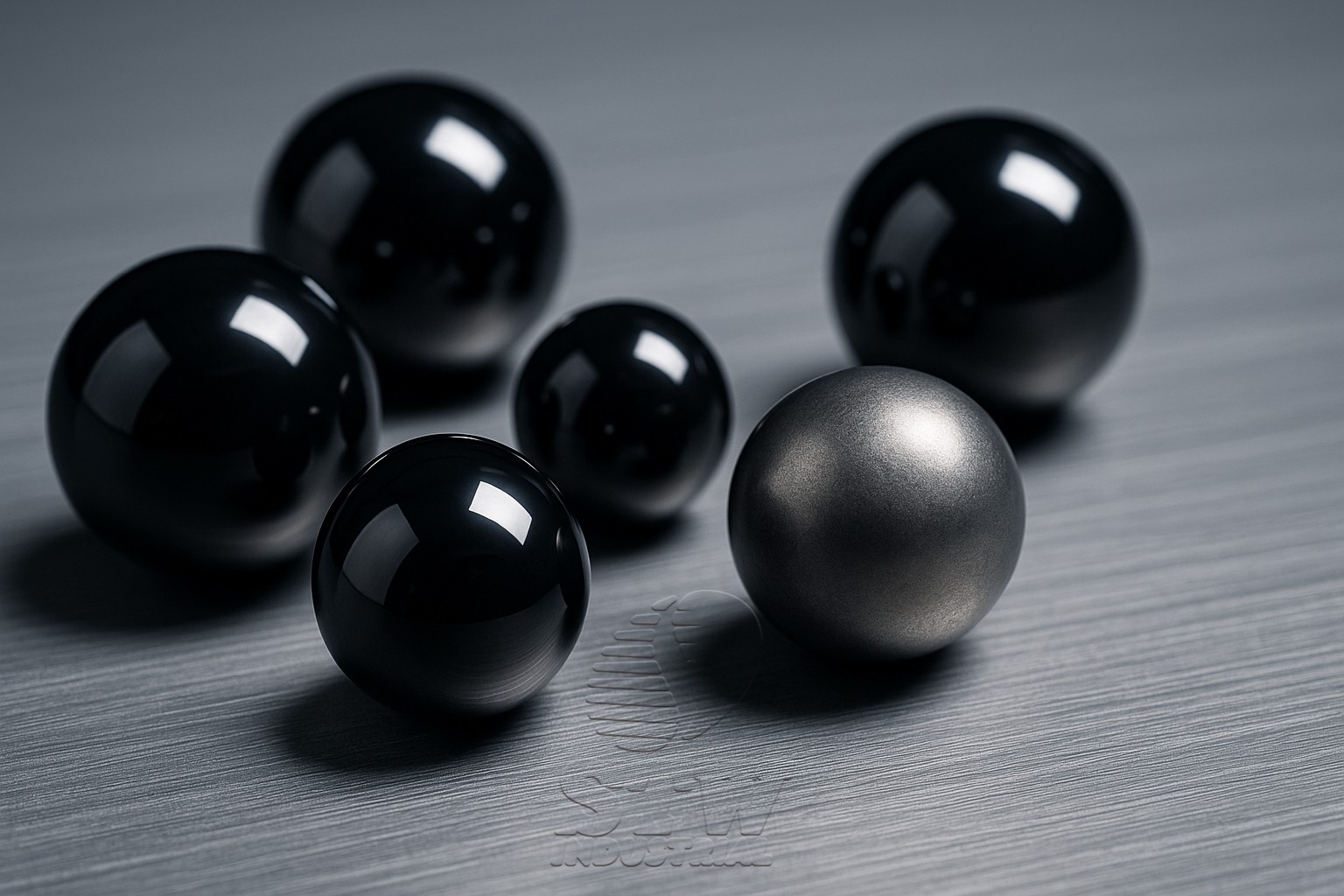
 Home > News
Home > News
In the aerospace industry, where precision, weight reduction, and extreme reliability are paramount, the choice of materials for components—especially small but critical parts like bearing balls—can significantly affect overall performance and safety. Among numerous materials, ceramic balls and tungsten carbide balls stand out for their exceptional performance and durability under demanding conditions. Let’s explore why these two materials are favored in aerospace applications.
Key Advantages:
Lightweight Design: Ceramic balls are about 60% lighter than steel, making them ideal for reducing overall aircraft weight and improving fuel efficiency.
High Hardness & Wear Resistance: Materials like silicon nitride (Si₃N₄) offer hardness up to 1500 HV, supporting high-speed, high-load applications.
Excellent Heat Resistance: Withstanding up to 1200°C, ceramic balls are suitable for jet engines and high-temperature modules.
Electrical Insulation & Corrosion Resistance: Ideal for electric motors and electromagnetic-sensitive devices in satellites.
Common Applications:
Satellite gyroscopes, jet engine bearings, magnetic levitation systems, and electric drive assemblies.
Key Advantages:
High Density: At ~15 g/cm³, tungsten carbide balls provide superior rotational inertia for inertial guidance and control systems.
Exceptional Wear Resistance: Excellent performance under high-load and impact conditions with minimal deformation.
Thermal Stability: Low thermal expansion ensures dimensional stability under extreme temperature changes.
Chemical Stability: Resistant to acid, alkali, and vacuum environments; ideal for rocket fuel control systems and deep-space mechanisms.
Common Applications:
Inertial navigation systems, satellite control devices, missile guidance components, and high-precision flow control.
Use Case | Recommended Material | Reason |
Lightweight, high-speed | Ceramic Ball | Reduces mass and friction |
Heavy load, impact-prone | Tungsten Carbide Ball | Superior hardness and durability |
Electrically insulated areas | Ceramic Ball | Non-conductive and anti-magnetic |
Precision mass stabilization | Tungsten Carbide Ball | High density for balance and control |
In many aerospace assemblies, ceramic and tungsten carbide balls are used together for performance optimization.
Material Certification: Sourced from premium suppliers, compliant with ASTM, GB/T, and aerospace standards.
High Precision: Surface roughness as low as Ra 0.01μm; tolerances within ±0.001mm.
Full Inspection: Including load testing, extreme temperature performance, and dimensional verification.
Custom Production: Tailored sizes, grades, and coatings based on specific aerospace application needs.
Ultra-high purity ceramics for deep space temperature fluctuations
Nano-coated tungsten carbide balls for improved corrosion resistance
Composite balls combining ceramic and metal properties for hybrid functionality
Though small in size, ceramic and tungsten carbide balls play a critical role in ensuring flight safety and system longevity. As a specialized B2B supplier, we are committed to providing aerospace-grade spherical solutions with uncompromising precision, reliability, and innovation.
Choosing the right ball material is choosing reliability for every aerospace mission.
View More(Total0)Comment Lists